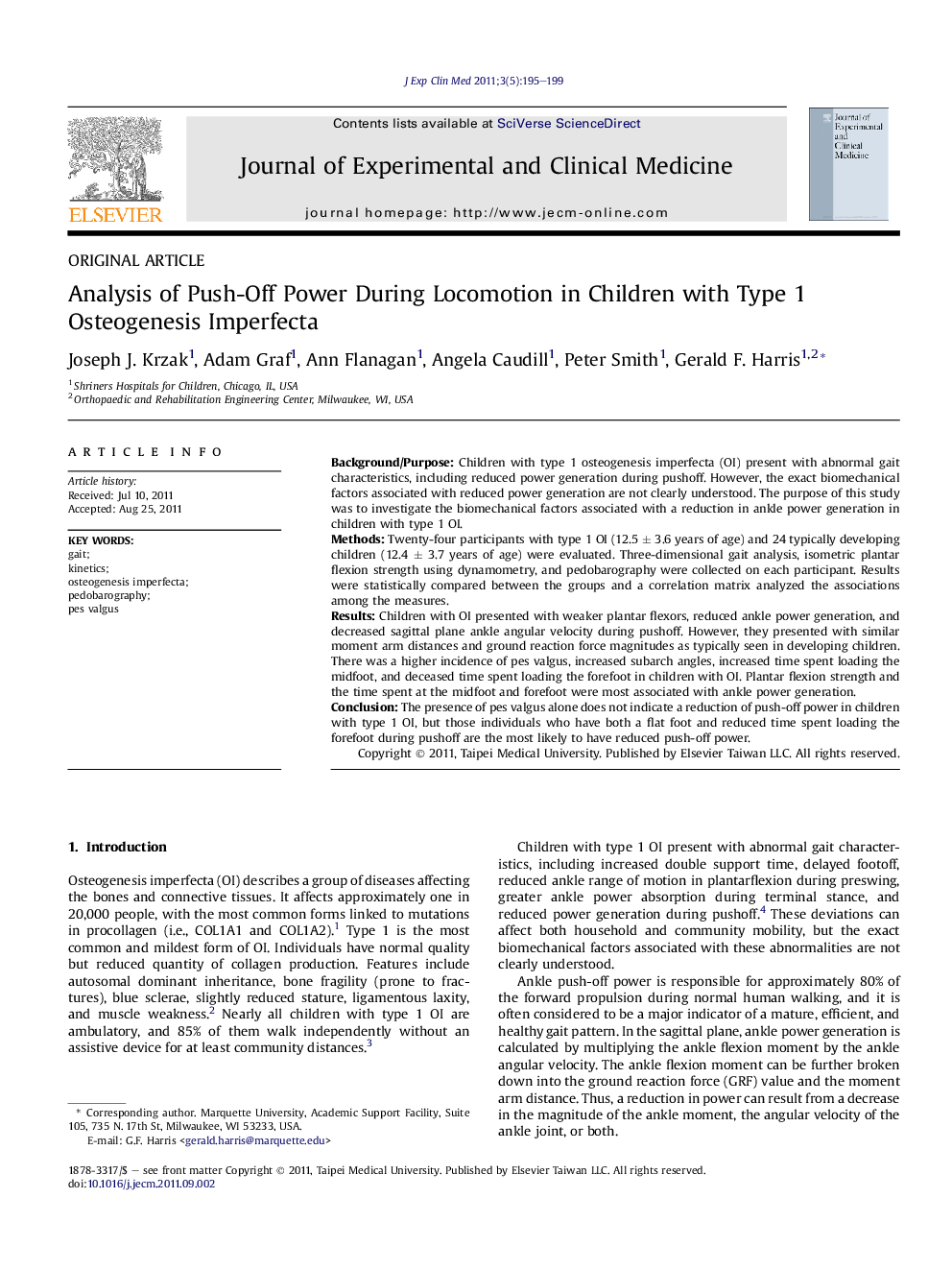| Article ID | Journal | Published Year | Pages | File Type |
|---|---|---|---|---|
| 3477872 | Journal of Experimental & Clinical Medicine | 2011 | 5 Pages |
Background/PurposeChildren with type 1 osteogenesis imperfecta (OI) present with abnormal gait characteristics, including reduced power generation during pushoff. However, the exact biomechanical factors associated with reduced power generation are not clearly understood. The purpose of this study was to investigate the biomechanical factors associated with a reduction in ankle power generation in children with type 1 OI.MethodsTwenty-four participants with type 1 OI (12.5 ± 3.6 years of age) and 24 typically developing children (12.4 ± 3.7 years of age) were evaluated. Three-dimensional gait analysis, isometric plantar flexion strength using dynamometry, and pedobarography were collected on each participant. Results were statistically compared between the groups and a correlation matrix analyzed the associations among the measures.ResultsChildren with OI presented with weaker plantar flexors, reduced ankle power generation, and decreased sagittal plane ankle angular velocity during pushoff. However, they presented with similar moment arm distances and ground reaction force magnitudes as typically seen in developing children. There was a higher incidence of pes valgus, increased subarch angles, increased time spent loading the midfoot, and deceased time spent loading the forefoot in children with OI. Plantar flexion strength and the time spent at the midfoot and forefoot were most associated with ankle power generation.ConclusionThe presence of pes valgus alone does not indicate a reduction of push-off power in children with type 1 OI, but those individuals who have both a flat foot and reduced time spent loading the forefoot during pushoff are the most likely to have reduced push-off power.
